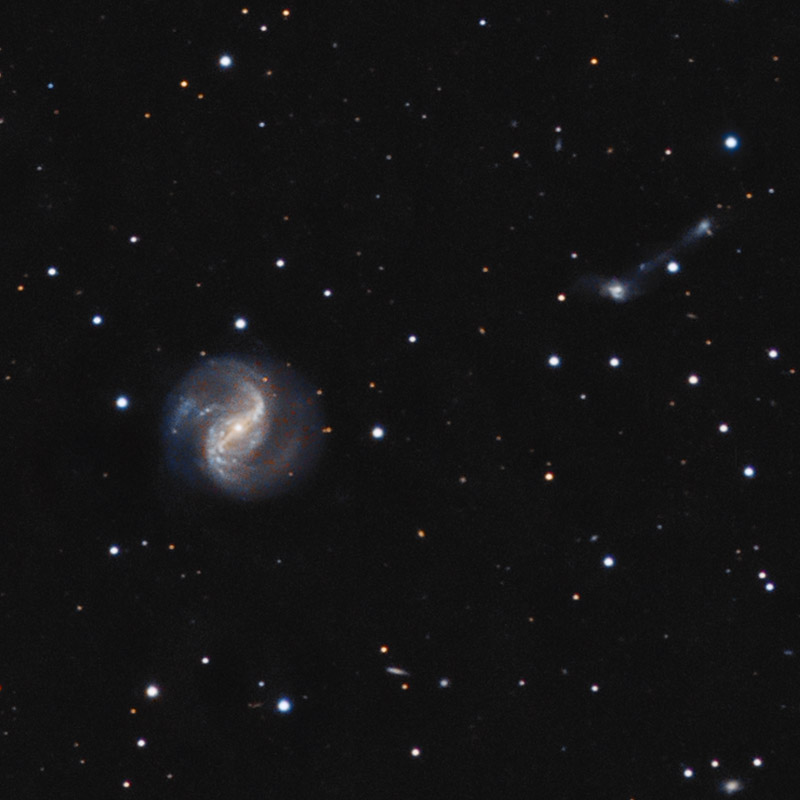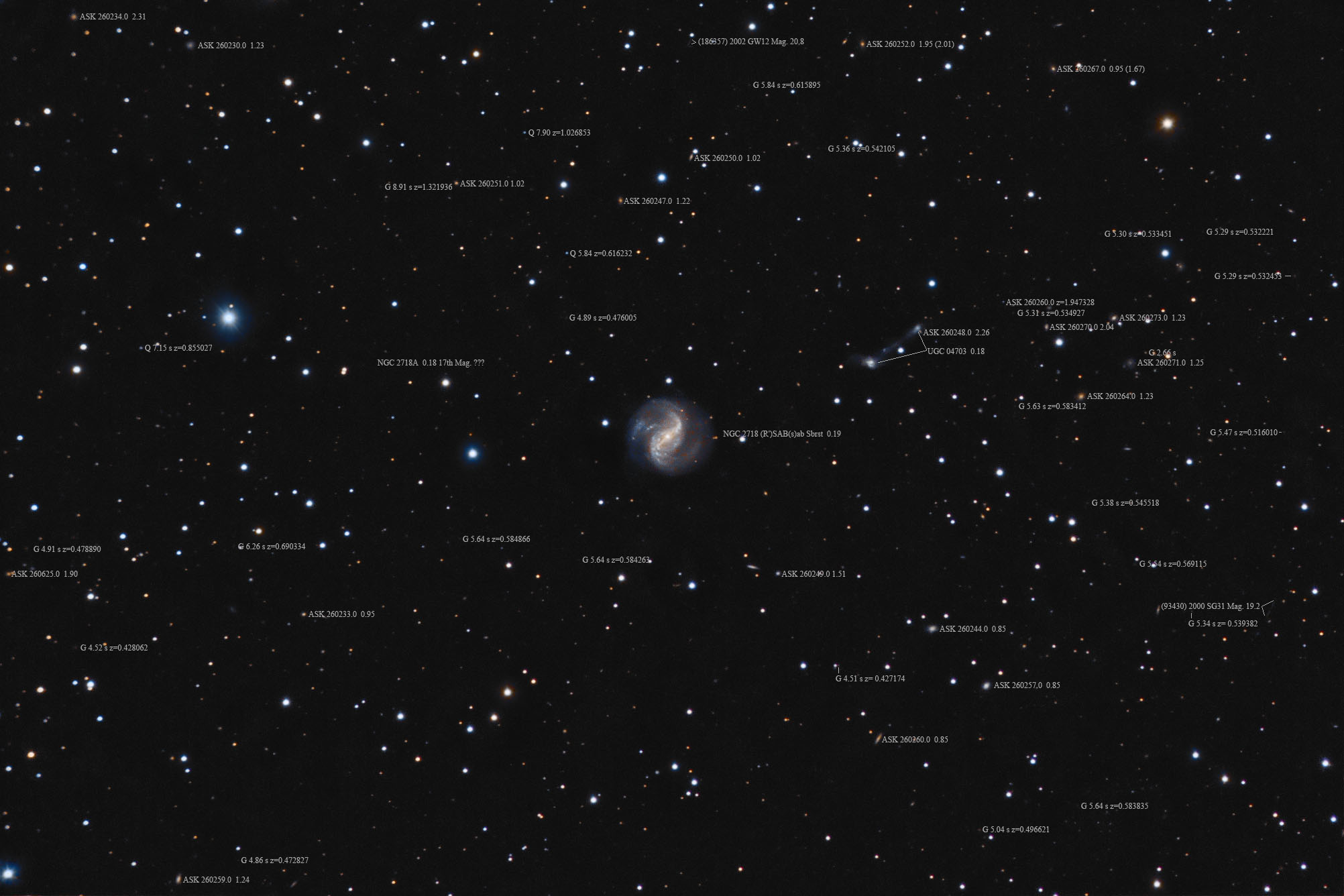| Description | Images |
Object name: NGC2718Designation(s): NGC2718, UGC04703, My target was the face on barred spiral NGC 2718 but serendipity stuck again. Also in the field was UGC 04703 a neat pair of possibly interconnected galaxies in Hydra. Redshift puts NGC 2718 at 190 million light-years and UTC 04703 a bit closer at 180 million light-years. They are obviously tiny in comparison to NGC 2718. I measure it at about 130,000 light-years across. A bit bigger than our galaxy. The southern member of UGC 04703 has a faint plume to the east. Including it but not the apparent bridge between the two galaxies it is 51,000 light-years across but omitting the plumes it is only 16,500 light-years in size. Its companion is only 10,500 light-years in size. The pair spans a distance of 110,000 light-years. Obviously one or both were larger than we seem them now with the stars of one or both strung between the two. Related Designation(s):2MASS J08585046+0617349, 2MASX J08585046+0617354, 2MIG 1209, AKARI J0858504+061737, ASK 260245.0, CGCG 033-032, CGCG 033-034, CGCG 0855.8+0631, CGCG 0856.2+0630, CGPG 0855.8+0631, ECO 09628, HIPASS J0858+06, IRAS 08561+0629, IRAS F08561+0629, LQAC 134+006 016, MCG +01-23-015, MRK 0703, NGC 2718, NGC2718, NSA 046892, NVSS J085850+061733, PGC 025225, SDSS J085850.46+061734.7, SDSS J085850.47+061734.8, SIG 1144, SSTSL2 J085850.46+061735.0, UGC 04703, UGC 04707, UGC04703, UNAM-KIAS 0226, UZC J085850.4+061735, [dML87] 623, [RC2] A0855+06, [TTL2012] 457995, [VCV2001] J085850.6+061733, [VCV2006] J085850.6+061733, | Permanent link: https://images.mantrapskies.com/catalog/NGC/NGC2718-UGC04703/NGC2718L8X10R2X10GB1X10RGB2X10.JPG |


